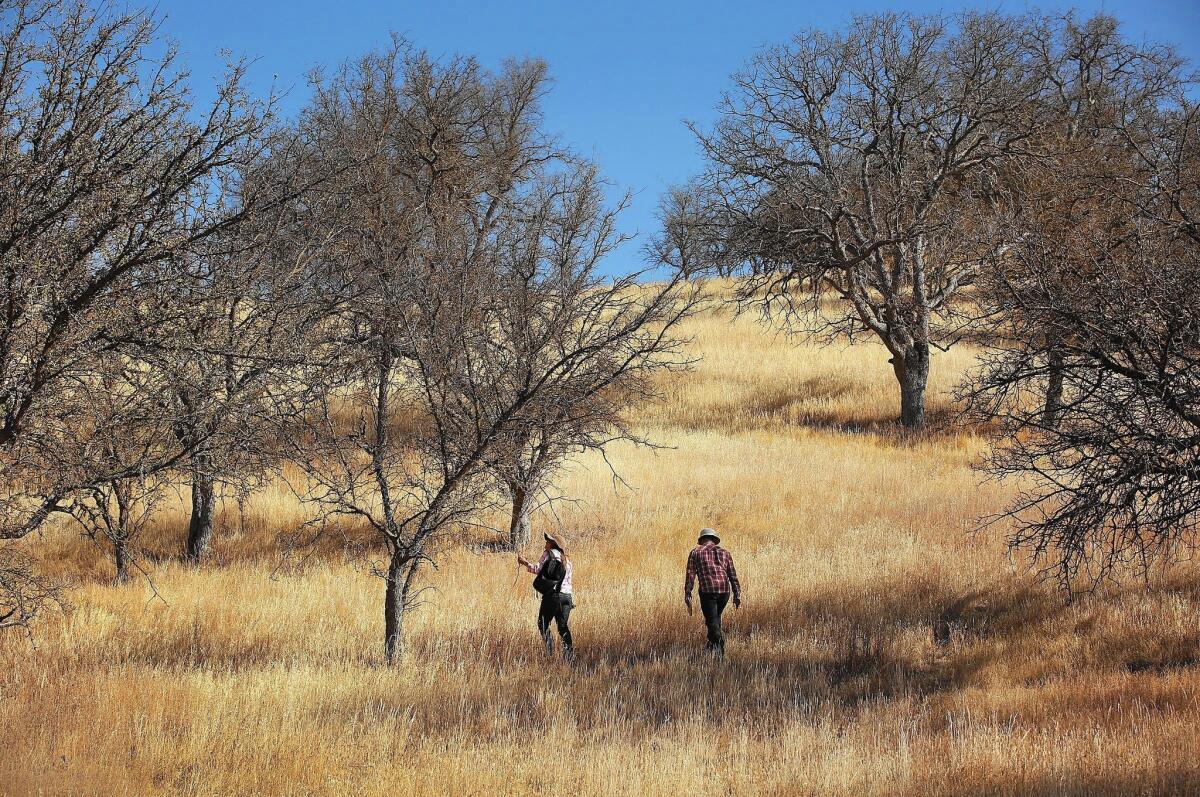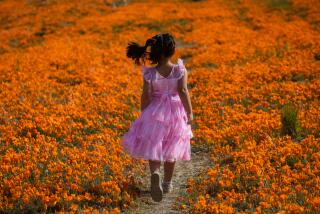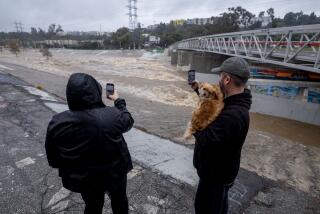California drought: Climate change plays a role, study says. But how big?

A growing number of scientists have made the claim that climate change is at least partly responsible for California’s crippling drought. Now researchers have estimated the extent to which humans are to blame: between 8% and 27%.
In other words, without heat-trapping greenhouse gas emissions causing temperatures to rise, the drought would have been 8% to 27% less severe than it is, said John Abatzoglou, a University of Idaho climate researcher and coauthor of a study published Thursday in the journal Geophysical Research Letters.
“By knowing how much global warming has contributed to the trend in California drought conditions over the past century, we can reliably predict how the future will play out,” said A. Park Williams, a bioclimatologist at Columbia University’s Lamont-Doherty Earth Observatory who led the study.
The prediction is not pretty. The study’s forecast calls for increasing temperatures in the Golden State over the next few decades. By the 2060s, Williams said, more or less permanent drought conditions will set in, with evaporation overpowering short bursts of intense rainfall.
That means the natural climate variability that still dominates regional weather patterns will become increasingly unable to compensate for the drying effect of rising temperatures from global warming, according to the study.
NEWSLETTER: Get the day’s top headlines from Times Editor Davan Maharaj >>
Gov. Jerry Brown said the report should serve as a wake-up call to those who have failed to take climate change seriously.
“New scientific reports now make it crystal clear that climate change is already affecting California and the Southwest in the form of higher temperatures and a more devastating drought,” Brown said in a statement issued Thursday. “It’s time for Republicans, foot-dragging corporations and other deniers to wake up and take sensible action before it’s too late.”
Williams and his colleagues made their forecast after conducting a comprehensive evaluation of the annual variations of drought and weather conditions at 23,955 locations throughout California. In each of those seven-square-mile plots, the team assessed the precipitation, temperature, wind, humidity and solar radiation for each month over the last 120 years.
All those measurements were plugged into a computer simulation and used to determine the rate of evaporation at each site, Williams said. By comparing changes over time and modeling a range of scenarios, the team calculated that at least 8% of the drought could be attributed to global climate change. The upper limit, they found, was no more than 27%.
“If it turns out that the real contribution is closer to 8%, it means the global warming process is underway and may take a few more years before it becomes a dominant player in California drought conditions,” he said. “If, however, it is closer to 27%, it means we have already reached [that] point.”
The team’s best guess is that the true range “is about 15% to 20% — smack dab in the middle,” Williams said.
One thing the results show for sure is that the drought is not simply the result of natural processes, he said: “There are lots of people who are under the impression that this drought is entirely caused by natural climate variability. That is not the case.”
Kevin Anchukaitis, a professor of geography at the University of Arizona who wasn’t involved in the research, said the study was the first to quantify the degree to which human activity has contributed to the drought.
“This is the point from which future research on this issue will pivot,” he said.
Water and Power is The Times’ guide to the drought. Sign up to get the free newsletter >>
Over the last four years, the drought has prompted policymakers to enact severe restrictions on municipal water use and forced farmers to fallow their fields. The study results suggest these changes may be here for good.
“The current drought cannot be passed off as a fluke event very unlikely to reoccur in the near future,” Williams said. “It would be therefore extremely unwise to discontinue current efforts to make necessary changes to water-use policies.”
Twitter: @LouisSahagun
MORE ON THE CALIFRONIA DROUGHT:
Another toll of the drought: Land is sinking fast in San Joaquin Valley, study shows
Another 2 or 3 years of drought? Report looks at what it might mean
Graphic: Drought report cards for California’s urban water districts






